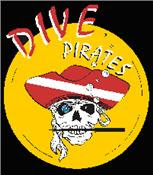Like crappie, bluegill are one of the top five sport fish. They're not difficult to catch and are great for young anglers and other novice fishermen to target. They're a schooling fis
 h, and once you find a school, you can often catch multiple 'gills in that area. Fishermen use a variety of baits for bluegill, including crickets, worms, corn, and dry flies in various styles.
h, and once you find a school, you can often catch multiple 'gills in that area. Fishermen use a variety of baits for bluegill, including crickets, worms, corn, and dry flies in various styles.Bluegills are flat fish with fairly small mouths. The dark spot on the gill cover flap is a key identifying feature. Bluegills have darker vertical bands on their sides, as you can see in the picture here. The males have a noticeable patch of orange on the underside, while females are more yellowish. The adult size is anywhere from 6-10 inches, and the world record was a 4 pound, 12 ounce 'gill caught in 1950.
Bluegills' main source of food is insects, which they often catch on the surface. They also eat crustaceans, small fish, and snails. If food supplies are low they may even eat some algae.
In the spring, male bluegills make nests in the bottom of the lake or pond. The nest is a shallow, round depression. Bluegills make their nests in proximity to other bluegills' nests, and a group of nests is referred to as a spawning bed. After the female lays the eggs, the male guards the nest.
A member of the sunfish family, bluegills are often referred to as "sunnies." They're also sometimes called bream. They sometimes interbreed with green sunfish, making a green sunfish/bluegill hybrid. Click here for a picture of the two fish on the Nebraska Game and Parks Fish Identification page on their website.
This information comes from the Nebraska Game and Parks Commission’s Fish Identification page on their website, thejump.net/fishlist/bluegill.htm, OutdoorAlabama.com, and the Maryland DNR website.





No comments:
Post a Comment